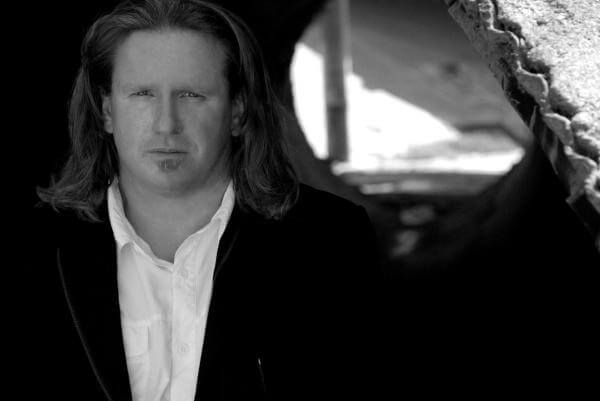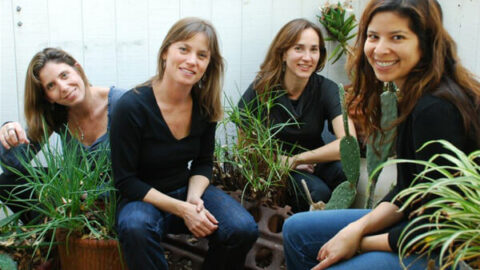 What was most captivating about Eclipse String Quartet’s March 22 performance at Roulette in Brooklyn was the clarity with which each melodic line sung through the hall. Every instrument and player brought their own qualities that were never lost in the ensemble, while at the same time coming together in conversation and moments of blend. This was particularly important given their choice of Ruth Crawford’s String Quartet, a highly contrapuntal work rich in dialogue.
What was most captivating about Eclipse String Quartet’s March 22 performance at Roulette in Brooklyn was the clarity with which each melodic line sung through the hall. Every instrument and player brought their own qualities that were never lost in the ensemble, while at the same time coming together in conversation and moments of blend. This was particularly important given their choice of Ruth Crawford’s String Quartet, a highly contrapuntal work rich in dialogue.

As a composer, Ruth Crawford (Seeger) was ahead of her time, and developed a unique style that has yet to be fully appreciated or comprehended. She championed a brand of American dissonant music that was jarringly bold but at the same time rich in expressive capacity, lyrical when the occasion called for it, and always full of rhythmic energy. Diverging to a significant degree from what was all the rage in Europe at the time, Crawford described the principles of this new American dissonant style as the following:
Clarity of melodic line
Avoidance of rhythmic stickiness
Rhythmic independence between parts
Feeling of tonal and rhythmic center
Experiment with various means of obtaining at the same time, organic unity and various sorts of dissonance
(Quoted in Judith Tick’s Ruth Crawford Seeger: A Composer’s Search for American Music, p. 202).
Eclipse Quartet excelled in bringing out all these qualities of Crawford’s 1931 String Quartet. I was especially enticed by a moment of musical conversation between cellist Maggie Parkins and violist Alma Lisa Fernandez that felt both spontaneous and confident. The performance as a whole was always “in the moment.” It was easy as a listener to follow the main melodic lines while also taking in the complexity of the piece and the relations between at times seemingly disparate parts.
Too often music with complex and changing rhythms is given a textbook “exact” interpretation rather than treated as something to be brought to life in performance. Countering this tendency, a composition treatise Crawford co-wrote (though didn’t officially co-author) with her husband stated that the “composer must remember … that there is often no difference between a simple rhythmic figure performed with rubato and a complex one played accurately.” (Quoted in Charles Seeger’s “Tradition and Experiment in (the New) Music” in Studies in Musicology II: 1929-1979, p. 175.) In Eclipse Quartet’s capable hands, Crawford’s “rhythmic dissonances” were full of life and gave the performance an extra energy and gravitas.

The andante third movement of Crawford’s Quartet is by far the hardest to pull off. Its melody and contrapuntal lines are easy to lose within the constant four-part texture, and its rhythmic motion, largely by way of dynamic changes on held notes rather than new attacks, is a very different conception of music. Eclipse Quartet excelled at drawing out what made the music tick, and unlike some performances, this third movement did not feel stuck, motionless, or place overemphasis on sonorities rather than momentum. The ending of this movement, a crescendo up to a sharp cut-off, felt like its logical conclusion.
The final movement, a rapid trade-off between the first violin and the rest of the quartet, was an excellent continuation of the sense of conversation that pervaded the performance. First violinist Sara Parkins played her part in a way that felt rugged and raw—just what the music calls for. Unlike some performances, Eclipse Quartet did not play this piece too fast and allowed just the tiniest amount of space between the first violin’s bursts of activity and the rest of the quartet’s answers, facilitating the feel of a dialogue.
In this fine performance, Eclipse Quartet demonstrated a commitment, both emotionally and intellectually, to the music they were presenting. This sense of investment is all too often absent from new music ensembles that seem more concerned with giving lots of premieres rather than deeply engaging great works of art. Given Crawford’s unique musical language hasn’t received enough elucidation in performance, the clarity Eclipse Quartet gave it is an important contribution to giving this outstanding composer her due place.

Sean Heim’s No Quarter, composed in 2010, pulled some intriguing and original sounds from the string quartet without a hint of gimmickry. I was especially struck by the way the cello often had the melody in its lower register while the rest of the quartet accompanied in their upper registers. The space between the instruments allowed the cellist Maggie Parkins to really sing out, and the musical texture, especially with the use of slow, wide vibrato on high notes in the violin parts, was something I’ve never quite heard before. The recurring use of pitch bends in this piece sounded like real motivic substance in Eclipse Quartet’s hands. Heim describes the piece’s conception as original being inspired at first by pirate stories and then more by treachery and betrayal in the broader sense, resulting in six sections: “the indeterminate night, something’s creaking in the distance, the air of death and rot, she’s upon us, the horror revealed, and farewell and adieu.” Eclipse Quartet’s performance brought this sense of journey to life, and the ending felt like the whole piece had been headed in that direction (though I couldn’t explain exactly why).
Eclipse Quartet also gave strong performances of Ben Johnston’s String Quartet No. 4, a set of variations on “Amazing Grace” in just tuning with a strong Harry Partch influence, and a piece by Lou Harrison for an encore. Their performance as a whole demonstrated their cultivation of a style all their own, with tremendous clarity of melodic line and contrapuntal textures and a deliberate selection of repertoire that played to their strengths. Hopefully their interpretations will make their way onto a CD soon.
Finally, I was also impressed with Eclipse Quartet’s demeanor: laid back but serious and engaged in the music they were playing without a hint of pretension. The venue, Roulette, likewise created the right atmosphere, putting the music front and center and with a good sound tech (a rarity these days), not forcing over-priced drinks on the audience, and not having the feel of fake artsy-hipsterness that has become the norm for new venues in NYC.
For more information about Eclipse Quartet, visit: http://www.eclipsequartet.com
–-
David Pearson is a saxophonist residing in NYC.
























